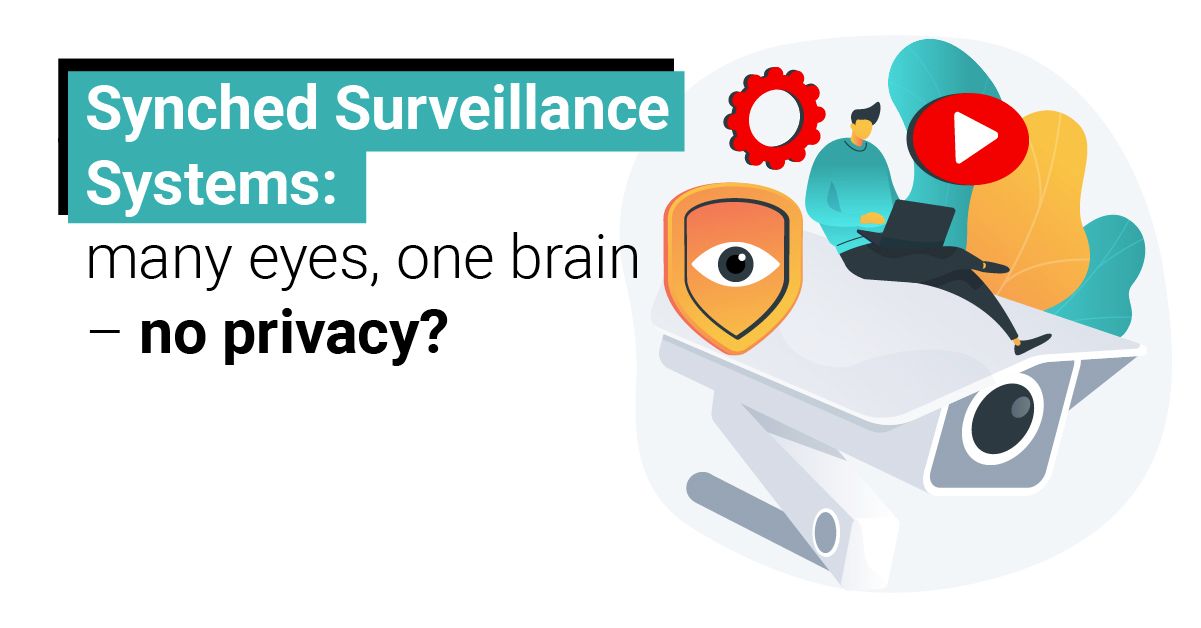
Synched Surveillance: many eyes, one brain – no privacy?
Surveillance software: the rise of data fusion systems
Security technology has made significant advances in the past two decades. Using complex algorithms, we now have the ability to sync and integrate information from various data streams much more effectively – and often in real-time – using so-called ‘correlation engines’ and automated data fusion systems.
Data streams and the rise of multi-intelligence fusion
Correlation engines look for patterns and connections within various data streams. In the surveillance sector, information is provided from sources including:
- CCTV camera footage
- Smartphones
- Drones
- License plate readers
Using automated ‘multi-intelligence fusion’, this data can now be quickly cross-checked against criminal and other police records, cell phone records, facial recognition software, etc. in real-time. The result? More accurate and integrated information can rapidly be accessed about people’s habits, movements, contacts, conversations, immediate whereabouts, and more.
Eye in the sky: automated data fusion’s advantages
The process of cross-checking various surveillance streams against one another has for years proved a time-consuming and laborious process for human analysts working in the security and law enforcement sector. Thanks to the advances in software development, applications now exist whereby analytics are managed entirely by algorithms.
This is known as ‘automated data fusion.’
What are the advantages of using automated data fusion systems for surveillance?
- Information on potential criminal activity can be identified, or even anticipated at speed, helping law enforcement officials respond timeously (even preventatively).
- Law enforcement officials can both track and track down criminals more efficiently.
Spy Games: potential dangers of data fusion systems
Data fusion systems can also be easily abused if placed in the wrong hands. The combined power of cloud computing and cutting-edge data analytic tools and apps can spell a recipe for disaster when it comes to:
Potential human rights abuses
When it comes to possible human rights abuses, and the incarceration and torture of innocent citizens, this technology opens (a potentially uber-ugly) can of worms.
Repressive political regimes who have access to sophisticated data fusion systems can more easily spy on individuals they regard as dissidents, essentially quelling any activity they consider a threat.
Corporations and fusion architecture
Using fusion architecture against one’s political enemies can be just as dangerous in corporate circles, allowing for nefarious and illegal activities for commercial gain.
Infringement of citizen’s privacy
Do governments and law enforcement agencies have the right to know every minute detail of our lives, all in the name of a concept like ‘homeland security?” Where does one draw a line when it comes to their right to know and our right to privacy?
Harassment and stalking
Imagine a bitter ex-partner with access to high-tech, integrated surveillance software. Not a pretty picture. An unstable or vindictive individual can cause serious harm with data fusion tools at their disposal.
All eyes on you? From military operations to the man on the street
There’s an all-too famous tenet in tech, that once there is a commercial rollout of new technology, the military has probably been using it already for at least 3-5 years.
While in the United States, there are currently no specific national rules governing fusion technology and preventing whoever so chooses from blending and integrating data sets, it’s time that this is addressed.
Big brother is definitely watching us, and his intentions, sadly, are not always honorable.
Read a fascinating investigative article on the rise of data fusion technology here.